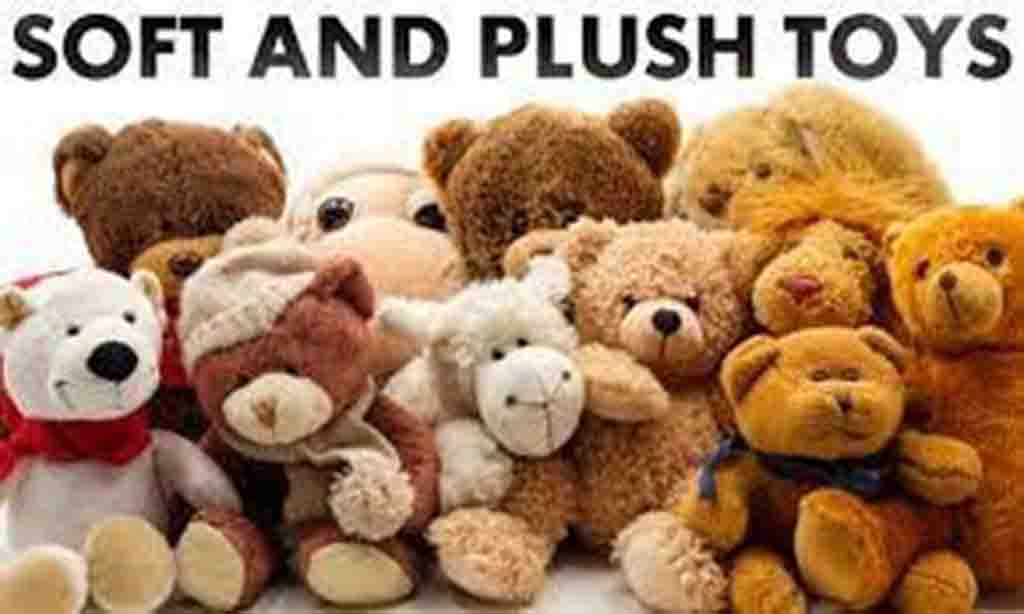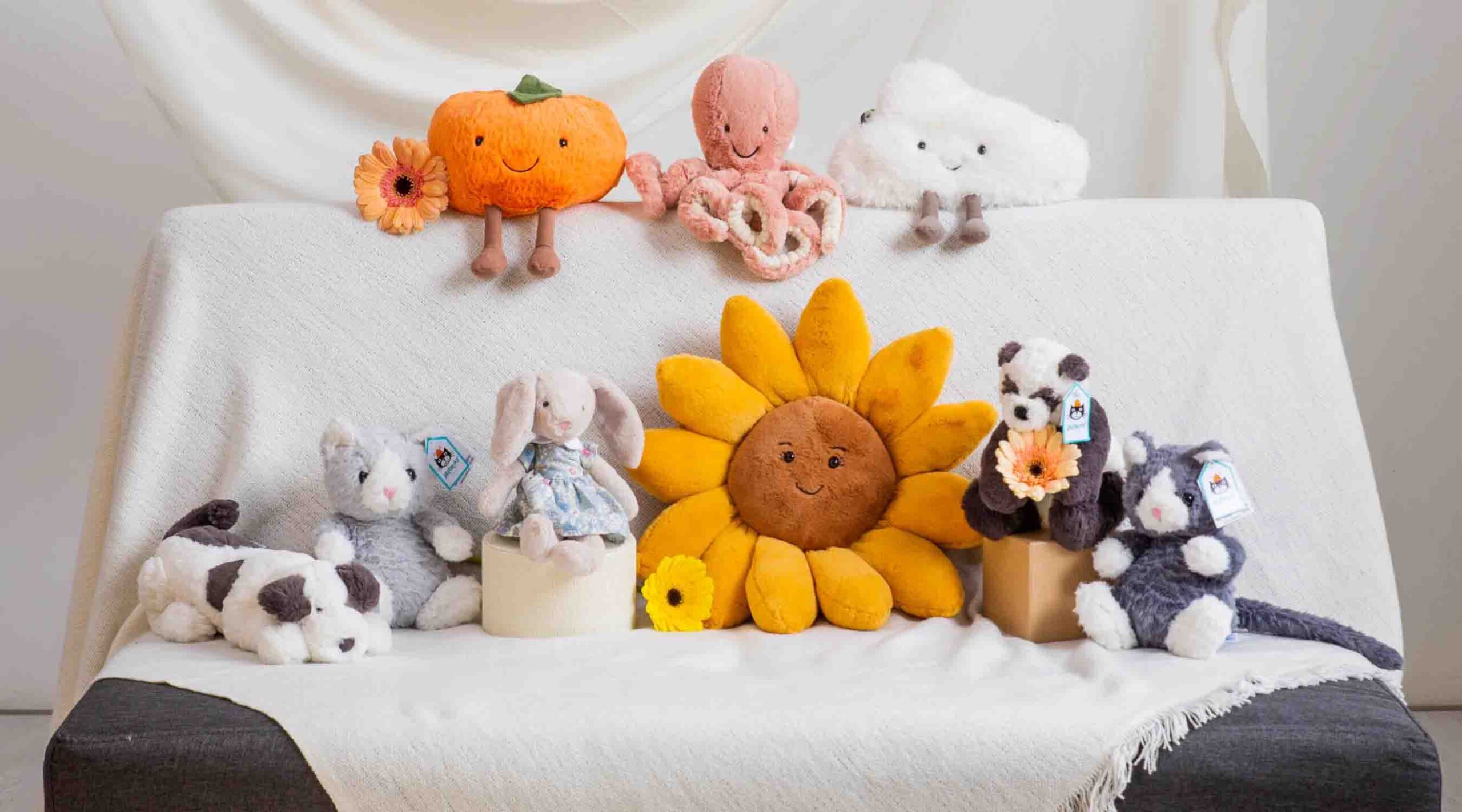Both “stuffed animals” and “plushies” describe the soft toys we know and love, but they carry different meanings across generations, cultures, and markets. While some see them as identical, others view the terms as representing two distinct categories shaped by tradition and modern consumer culture.
This guide explains the differences between stuffed animals and plushies, from manufacturing roots and material choices to marketing strategies and global cultural trends.
What defines a stuffed animal in traditional toy manufacturing?

The term “stuffed animal” has been around since the early 20th century, when the first teddy bears became a worldwide phenomenon.
Traditional Definition
- A stuffed animal is a toy in the shape of an animal, filled with cotton, wool, or polyester fiberfill.
- The term emphasizes the manufacturing process: toys that are literally “stuffed” with filling.
- Early examples include teddy bears and rabbits, designed mainly for children.
Industrial Context
- Manufacturers used cotton or kapok in the early days.
- As polyester became standard, stuffed animals became more affordable and durable.
- The word carried a practical and descriptive meaning, focusing on the toy’s physical structure.
| Attribute | Stuffed Animal |
|---|---|
| Origin | Early 1900s, industrial America |
| Focus | Physical process: toys “stuffed” with filling |
| Common Shapes | Bears, rabbits, dogs |
| Audience | Primarily children |
How is the term “plushie” understood in modern consumer culture?

“Plushie” emerged as a colloquial, affectionate term that reflects cultural shifts and online influence.
Modern Understanding
- “Plushie” is derived from the fabric “plush,” associated with softness and luxury.
- Unlike “stuffed animal,” plushie is broader—it can describe animals, dolls, fantasy creatures, or characters.
- The term emphasizes emotional connection and cuteness rather than just structure.
Cultural Position
- Plushies are strongly tied to youth culture, anime fandoms, and gaming communities.
- Online platforms (Tumblr, TikTok, Reddit) normalized “plushie” as the go-to term.
| Attribute | Plushie |
|---|---|
| Origin | Pop culture, late 20th century |
| Focus | Emotional and cultural meaning |
| Common Shapes | Animals, characters, fantasy creatures |
| Audience | Children, teens, collectors, adults |
What material and design differences exist between stuffed animals and plushies?

While both categories overlap, the materials and designs often reflect market positioning.
Stuffed Animals
- Often use traditional plush, cotton blends, or polyester fabrics.
- Designs focus on realism (bears, dogs, cats).
- Typically lightweight and straightforward in construction.
Plushies
- Frequently made with ultra-soft fabrics like minky or velboa.
- Designs emphasize kawaii (cute) features, oversized heads, and pastel colors.
- May include weighted inserts, embroidered details, or scented features.
| Feature | Stuffed Animals | Plushies |
|---|---|---|
| Fabrics | Cotton, polyester | Minky, velboa, fleece |
| Design | Realistic animals | Cute, stylized, fantasy |
| Features | Basic stuffing | Weighted, scented, embroidered |
| Appeal | Traditional play | Collectible, comfort, lifestyle |
How do age groups and cultural contexts shape the use of each term?

Language choice often reflects age and culture.
Generational Differences
- Older generations: Prefer “stuffed animals,” a familiar and descriptive term.
- Younger generations: Use “plushie,” influenced by anime, gaming, and online communities.
Cultural Contexts
- North America: Both terms are used, though “plushie” is trending among youth.
- Europe: “Plush toy” is still formal, but “plushie” is spreading.
- Asia: “Plushie” dominates, fueled by kawaii culture and character merchandising.
| Group/Region | Preferred Term | Reason |
|---|---|---|
| Older Adults | Stuffed Animals | Tradition |
| Younger Adults | Plushies | Pop culture |
| North America | Mixed usage | Generational split |
| Asia | Plushie | Anime & kawaii influence |
Why do brands and retailers choose one term over the other in marketing?

Marketers strategically select terms to align with target demographics.
Using “Stuffed Animals”
- Emphasizes tradition, reliability, and family-oriented branding.
- Works well for older buyers, formal retail settings, and educational toys.
Using “Plushies”
- Conveys cuteness, trendiness, and emotional appeal.
- Fits perfectly with online campaigns and youth-targeted markets.
Marketing Example
- A teddy bear brand might market to parents as “stuffed animals.”
- A kawaii lifestyle brand would market the same item as “plushies.”
| Term Choice | Marketing Benefit | Target Market |
|---|---|---|
| Stuffed Animals | Trust, tradition | Parents, older buyers |
| Plushies | Trend, emotion | Youth, collectors, online shoppers |
Are there global market trends influencing the distinction between stuffed animals and plushies?

Yes. The terms increasingly reflect global toy market dynamics.
Market Trends
- E-commerce growth: Online platforms like Amazon, Etsy, and TikTok shops favor “plushie” to attract younger consumers.
- Cultural exports: Japanese anime and Korean K-pop have globalized the word “plushie.”
- Sustainability and premiumization: Brands blend traditional “stuffed animal” credibility with modern “plushie” appeal.
Strategic Use for Manufacturers
Global suppliers must use both terms—“stuffed animals” for SEO targeting traditional buyers, and “plushies” for digital marketing to younger demographics.
| Market Trend | Impact on Terminology |
|---|---|
| E-commerce | Boosts “plushie” usage |
| Anime/K-pop | Globalizes “plushie” |
| Traditional Retail | Keeps “stuffed animals” relevant |
| Sustainability | Blends old and new branding |
Conclusion
The difference between stuffed animals and plushies lies not only in language but also in culture, design, and marketing strategy. While stuffed animals reflect traditional toy manufacturing, plushies embody modern consumer culture, influenced by anime, gaming, and social media.
At Kinwin, we help brands and retailers navigate both worlds. Whether your customers prefer classic stuffed animals or modern plushies, our products meet the highest international standards (EN71, ASTM, CPSIA, ISO) while delivering softness, safety, and emotional appeal.
📧 Contact us at [email protected]
🌐 Visit kinwintoys.com
Let’s create plush toys that appeal to every generation and market.







